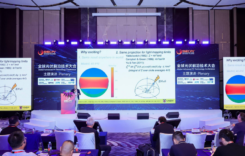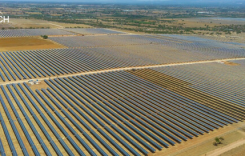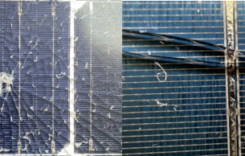PVTIME – According to research institutions, a combination of policy changes and falling investment has significantly altered the trajectory of the US clean energy industry. This volatility reflects the direct impact of policy uncertainty on the sector, while also highlighting the structural challenges of America’s energy transition.

Key data from E2, a leading US clean energy analysis firm, shows that, by September this year, the sector had lost over $24 billion in investment and shed approximately 21,000 jobs. September alone saw $1.6 billion worth of projects cancelled and almost 3,000 jobs cut. Republican-held districts have been hit hardest, with $12.4 billion in lost investment and around 15,000 job cuts. Plans for multiple grid-scale energy storage and electric vehicle manufacturing projects in states including Kansas, Michigan, North Carolina and Tennessee have either been cancelled or delayed.
Federal financial support has also contracted sharply. In October, the US Department of Energy announced that it would end funding for 223 energy projects across 321 grant programmes, representing an estimated $7.56 billion of expenditure. The affected projects cover solar, wind, energy storage and hydrogen infrastructure. E2 notes that this decision will further erode industry confidence, leaving small and medium-sized developers who rely on public funds facing cash flow pressures. Michael Timberlake, E2’s communications director, emphasised that suspending projects not only delays progress in clean energy but also harms the competitiveness of US manufacturing, as potential investments shift overseas and domestic job opportunities diminish.
Some multinational energy firms have already redirected manufacturing projects originally planned for the US to Canada, Mexico, and Europe. Cancelled Department of Energy projects are concentrated in states led by the Democrats, sparking widespread concern among local governments and industry associations. Although some positive developments have occurred, such as the announcement of $542 million in new investments for electric vehicle components, solar panel production and data centre energy facilities in September, which are expected to create 985 long-term jobs, industry experts agree that these cannot offset the broader downward trend. According to the American Clean Power Association, clean energy capacity growth was almost non-existent in the second quarter, and there has been no improvement in future project pipelines.
The sector is also grappling with unprecedented policy rollbacks. Simon Clements, investment manager at Liontrust’s sustainable investment team, explained that a series of regulations conflicting with sustainability goals have been swiftly implemented this year, most notably the ‘Big and Beautiful’ Act, which was signed in July 2025. This legislation brings forward the deadline for clean energy tax credit applications from 2032 to the end of 2027, thereby accelerating the phase-out of preferential policies.
The American Clean Power Association’s quarterly report reveals that only 11.6GW of new wind, solar, and energy storage capacity were added in the second quarter, a mere 1% year-on-year increase. Compared to the same period last year, first-half capacity growth fell, with utility-scale solar installations, a key segment, dropping 23%, while onshore wind rose by only 12%. Although energy storage capacity increased by 63%, this was insufficient to offset the overall weak expansion momentum. In order to secure tax credits before the 2027 deadline, developers are accelerating projects originally planned for phased delivery by 2030.
Further pressure comes from the Department of Energy’s announcement in September that it was cancelling over $13 billion in green energy funding. This has cast uncertainty over projects that were previously supported by the Inflation Reduction Act. According to Reuters, this adjustment will reduce subsidy amounts and shorten project timelines, making it more difficult for small and medium-sized enterprises to secure financing. Jason Grumet, CEO of the American Clean Power Association, stated that administrative delays and policy uncertainty are significantly constraining project pipelines.
Shifts in policy are driving industry consolidation as market resources are reallocated. According to Reuters data, US clean energy mergers and acquisitions surged to $34 billion across 63 deals in the first half of the year, a multiple of the previous six months. Small and medium-sized enterprises under financial pressure are merging, forming joint ventures or selling assets in order to survive. Sunnova Energy is a case in point: it entered financial distress after losing $29.2 billion in loan guarantees and is now pursuing strategic restructuring. Meanwhile, private equity firms and large utilities are expanding their presence. CBRE Investment Management recently acquired Blackstone-backed developer ClearGen, which holds over 250 projects across 14 states, while Agilitas Energy has completed multiple solar and hydropower acquisitions and plans to expand further.
Bob Keefe, E2’s executive director, emphasised that the clean energy sector was once America’s most promising source of job growth, but that the current policy environment is severely jeopardising this. Wood Mackenzie forecasts that solar and wind installations will be 17% and 20% lower than previously projected, respectively, over the next decade. The Rhodium Group estimates that $263 billion of clean energy infrastructure investment is at risk, and that US industrial energy costs could rise by $11 billion by 2035.
Foreign investor confidence is also waning. Singapore’s Bila Solar has suspended its factory expansion in Indiana, Canada’s Heliene is reconsidering its battery project in Minnesota, and Norway’s NorSun has postponed its wafer plant in Oklahoma. Furthermore, two permitted offshore wind projects in the northeastern United States are facing uncertainty. These developments signal a decline in the sector’s international appeal, with some high-end manufacturing likely to shift to other markets.
Clean energy installation growth has slowed markedly across many states. California and Texas, which are leaders in clean energy capacity, have only achieved 8% growth this year, while Florida, Georgia and Nevada are lagging behind the national average. Industry insiders cite rising component and labour costs, as well as land development constraints, as key factors limiting new capacity growth in wind, solar and related segments.

Scan the QR code to follow PVTIME official account on Wechat for latest news on PV+ES











